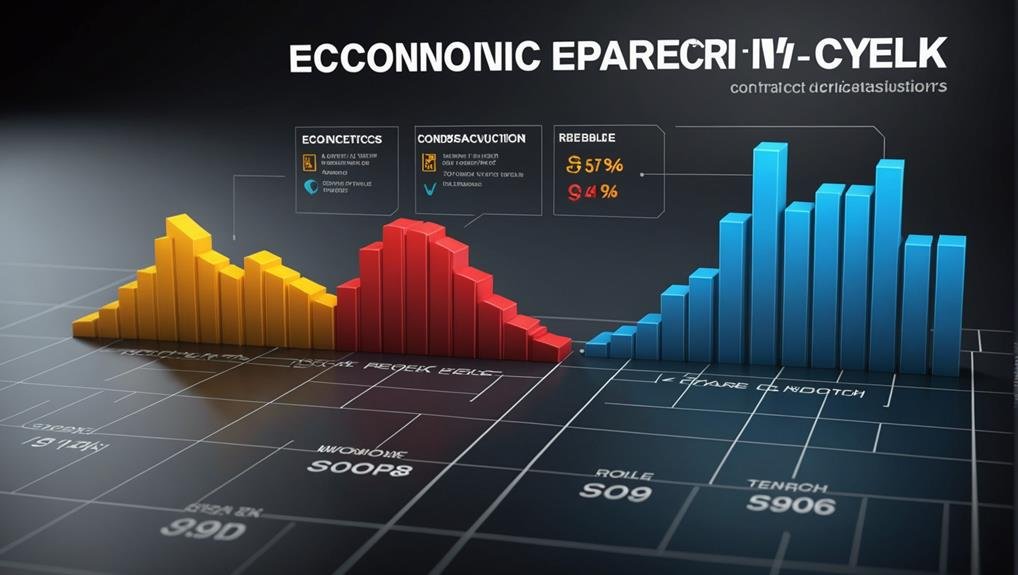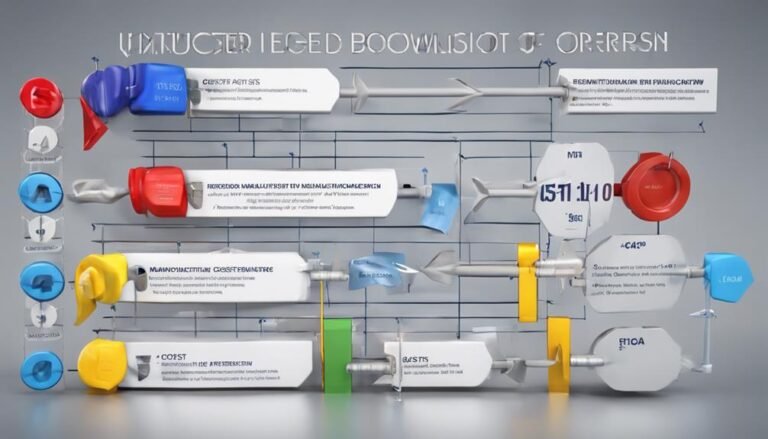Economic Cycle: Definition and 4 Stages of the Business Cycle
Understanding the economic cycle involves grasping the shifts between expansion and contraction influencing growth, employment, and market trends. The four stages of the business cycle include peak, expansion, contraction, and trough, each impacting the economy differently. Analyzing key indicators like GDP, employment rates, and consumer spending helps in predicting economic movements. By measuring economic cycles and staying informed on theories like Monetarism and Keynesianism, businesses and investors can make strategic decisions. Exploring these stages and theories deepens insight into economic dynamics and assists in maneuvering the complexities of the business cycle.
Key Takeaways
- Economic cycle involves alternating periods of expansion and contraction driven by indicators like GDP and interest rates.
- Stages include peak phase with maximum growth, contraction phase with slowing growth, and challenges for businesses and policymakers.
- Measuring economic cycles involves analyzing indicators, using leading indicators for predictions, and integrated indexes for a holistic view.
- Monetarism and Keynesianism are economic theories that emphasize money supply, aggregate demand, and investment demand fluctuations.
- Understanding economic theories and concepts helps navigate cycles and make informed decisions based on indicators like unemployment rates and interest adjustments.
Economic Cycle Overview
The economic cycle, also referred to as the business cycle, displays a pattern of alternating periods of expansion and contraction driven by various economic indicators like GDP, interest rates, employment levels, and consumer spending. Economic cycle analysis involves tracking market trends to identify the current stage of the cycle.
Understanding these fluctuations is essential for investors and businesses to make informed decisions. Market trends provide valuable insights into the health of the economy, guiding strategies to capitalize on expansion phases and protect against downturns. By closely monitoring key indicators, such as GDP growth rates and consumer sentiment, stakeholders can adjust their investment portfolios and operational plans accordingly.
Analyzing market trends within the economic cycle framework allows for proactive decision-making and risk management strategies.
Stages of the Business Cycle
An examination of economic cycles reveals distinct stages marked by varying levels of growth, stability, and economic activity. During the peak phase, the economy experiences maximum growth rates, yet imbalances start to emerge, leading to potential risks. As the cycle moves into the contraction phase, growth slows down, employment levels decrease, and oversupply in the market contributes to price declines. This stage highlights the challenges faced by businesses and policymakers in managing the economy. The table below summarizes the characteristics of each stage in the business cycle:
| Stage | Characteristics | Key Indicators |
|---|---|---|
| Expansion | Rapid growth, low interest rates, increased production | Rising GDP, low unemployment, high consumer spending |
| Peak | Maximum growth with emerging imbalances | High inflation, potential asset bubbles, declining unemployment |
| Contraction | Slow growth, falling employment, oversupply | Rising unemployment, decreasing consumer spending, declining GDP |
Measuring Economic Cycles
Measuring economic cycles involves analyzing a range of quantitative indicators to identify patterns and trends in the overall economic performance.
- Data Analysis: Utilizing historical data and current metrics to assess economic conditions.
- Trend Forecasting: Predicting future economic movements based on past cycles and present indicators.
- Leading Indicators: Identifying variables that change before the economy starts to follow a particular pattern.
- Integrated Indexes: Creating integrated indices that combine multiple economic variables to provide a holistic view of the economic cycle.
Economic Theory and Concepts
Analyzing various economic theories and key concepts provides valuable insights into the drivers of the economic cycle and the impacts on business and investment decisions. Monetarism, championed by Milton Friedman, emphasizes the role of the money supply in influencing economic stability.
In contrast, Keynesianism, attributed to John Maynard Keynes, highlights the significance of changes in aggregate demand to explain fluctuations in the economic cycle. Investment demand fluctuations play a significant role in shaping economic activities, with factors like unemployment rates, government economic stimuli, credit cycles, and adjustments in interest rates impacting investment decisions.
Understanding these theories and concepts is essential for businesses and investors to navigate through different economic cycles, anticipate changes, and make informed strategic choices to optimize outcomes in varying economic conditions.
Conclusion
To sum up, the economic cycle is a fundamental concept in understanding the fluctuations of an economy. By analyzing key indicators and employing measurement and management strategies, individuals can navigate through the four stages of expansion, peak, contraction, and trough.
Just as a ship must weather the stormy seas to reach calmer waters, businesses and investors must adapt to the cyclical nature of the economy to thrive in the ever-changing financial landscape.







